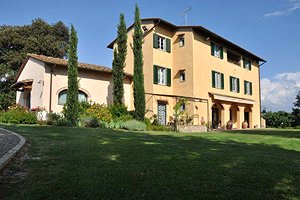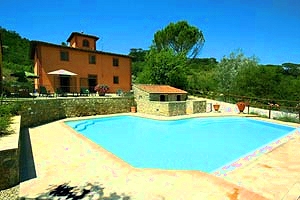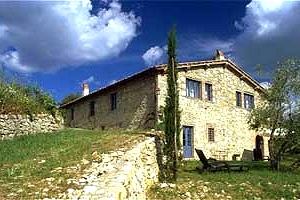



The Territory of the Chianti

TERRITORY OF CHIANTI Famous the world over for its excellent wine, the Chianti landscape is characterised by a continuous alternation of valleys and gentle hills cloaked in vines and olives but also of harsh peaks covered in woods of oaks, cypresses and pines. The entire area is scattered with ancient hamlets, churches and abbeys, turreted castles and fortresses, farmhouses and tuscany villas .
It is an architectural landscape made up of simple and warm materials such as limestone, pietra serena and terracotta, which has adapted itself to the natural landscape over the centuries, producing effects of breathtaking harmony. Inhabited since ancient times by the Etruscans, who it appears were the first to grow the vines and many archaeological traces of whom survive, the area also underwent a significant domination by the Romans, in the mediaeval period it was at length the scene of violent clashes between the rival cities of Florence and Siena, which only ceased in the mid sixteenth century with the definitive defeat of the Sienese of the Sienese Republic. This is by now past history, but it is no mere coincidence that, after centuries of antagonism and rivalryl, the eight municipalities of Chiantihave symbolically underwritten an agreement - the "Patto di Pontignano" - which lays down common rules for protecting and valorising their respective identities in a unified manner.

Our most requested holiday homes:
 Villa rental with swimming pool for holidays near Montespertoli in the countryside of Empoli (Florence). Sleeps 12+2 , hydromassage, panoramic view, Internet connection.
More details
Villa rental with swimming pool for holidays near Montespertoli in the countryside of Empoli (Florence). Sleeps 12+2 , hydromassage, panoramic view, Internet connection.
More details
 Independent villa with private swimming pool in San Casciano Val di Pesa, in the Chianti district, near Florence. Sleeps 8/12, air conditioning, Internet connection, outdoor whirlpool bath sitting 7, children's playground. Possibility of organising cooking lessons and dinners. Tennis club, riding stable and golf club nearby.
More details
Independent villa with private swimming pool in San Casciano Val di Pesa, in the Chianti district, near Florence. Sleeps 8/12, air conditioning, Internet connection, outdoor whirlpool bath sitting 7, children's playground. Possibility of organising cooking lessons and dinners. Tennis club, riding stable and golf club nearby.
More details
 Tuscan villa with pool near Radda in Chianti in the countryside of Chianti between Siena and Florence. Sleeps 10, Internet connection.
More details
Tuscan villa with pool near Radda in Chianti in the countryside of Chianti between Siena and Florence. Sleeps 10, Internet connection.
More details
 Villa for vacation rentals in Siena countryside. 4+2 sleeping accommodations, swimming pool.
More details
Villa for vacation rentals in Siena countryside. 4+2 sleeping accommodations, swimming pool.
More details






